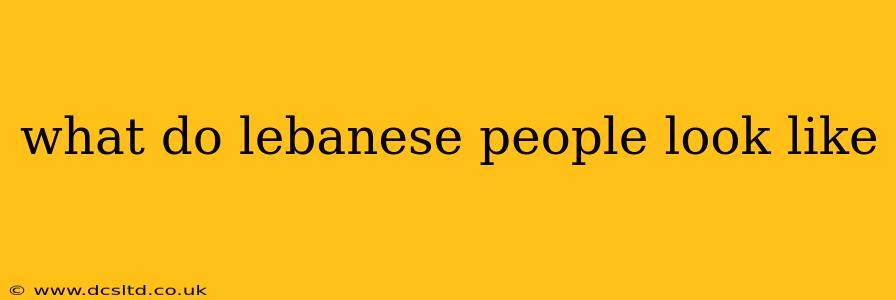What Do Lebanese People Look Like? The Diverse Faces of Lebanon
Lebanon, a melting pot of cultures and histories, boasts a population with a remarkably diverse range of appearances. There's no single "Lebanese look," a fact often overlooked in generalizations. Instead, the physical characteristics of Lebanese people reflect the country's rich and complex heritage, a blend of Mediterranean, Middle Eastern, and even European influences.
To understand the diversity, we need to consider the historical context. Lebanon has been a crossroads for centuries, with various empires and populations leaving their mark. This has resulted in a genetic mix that defies easy categorization.
What are the common physical features?
While there's no single prototype, certain features are more prevalent than others:
- Skin Tone: Ranges widely, from light olive to dark brown, often reflecting sun exposure and family heritage.
- Hair: Hair color and texture are varied. Dark brown or black hair is common, but lighter shades, including brown, blonde, and even red, can be seen. Hair texture can range from straight to wavy to curly.
- Eyes: Dark brown eyes are frequent, but hazel, green, and light brown eyes are also present.
- Facial Features: There's a wide variation in facial features, but some common traits include strong noses, expressive eyes, and well-defined cheekbones. However, these features are not universally present.
It's crucial to remember these are tendencies, not definitive characteristics. The appearance of Lebanese individuals is shaped by a multitude of factors, making broad generalizations inaccurate and potentially harmful.
How does Lebanon's diverse heritage influence appearances?
Lebanon's location and history have significantly influenced the physical diversity of its people:
- Phoenician Ancestry: The ancient Phoenicians, known for their seafaring skills and extensive trade networks, contributed significantly to Lebanon's genetic makeup. Their influence is reflected in the variety of physical traits observed today.
- Arab Influence: Centuries of Arab rule have left a significant mark, contributing to the prevalence of darker hair and skin tones among some Lebanese people.
- Ottoman Influence: The Ottoman Empire's long reign also impacted Lebanon's gene pool, introducing further genetic diversity.
- European Influence: The French Mandate period and subsequent interactions with Europe have also introduced additional genetic variation.
This complex interplay of ancestral influences means that Lebanese people exhibit a remarkable range of physical characteristics.
Are there regional differences in appearance?
While not rigidly defined, there might be subtle regional variations within Lebanon itself. Differences in sun exposure, lifestyle, and even local gene pools could lead to slight variations in appearance between different regions. However, these differences are minor compared to the overall diversity seen throughout the country.
Why is it inaccurate to define a "typical" Lebanese look?
Attempting to define a "typical" Lebanese look is misleading and perpetuates harmful stereotypes. Lebanon's rich history and diverse population mean that appearances vary greatly. Focusing on generalized physical features ignores the individuality and beauty of each person.
Instead of seeking a singular representation, appreciating the broad spectrum of appearances within the Lebanese population celebrates the country's unique and fascinating heritage. The beauty of Lebanon lies in its diversity, and this diversity is vividly reflected in the faces of its people.
